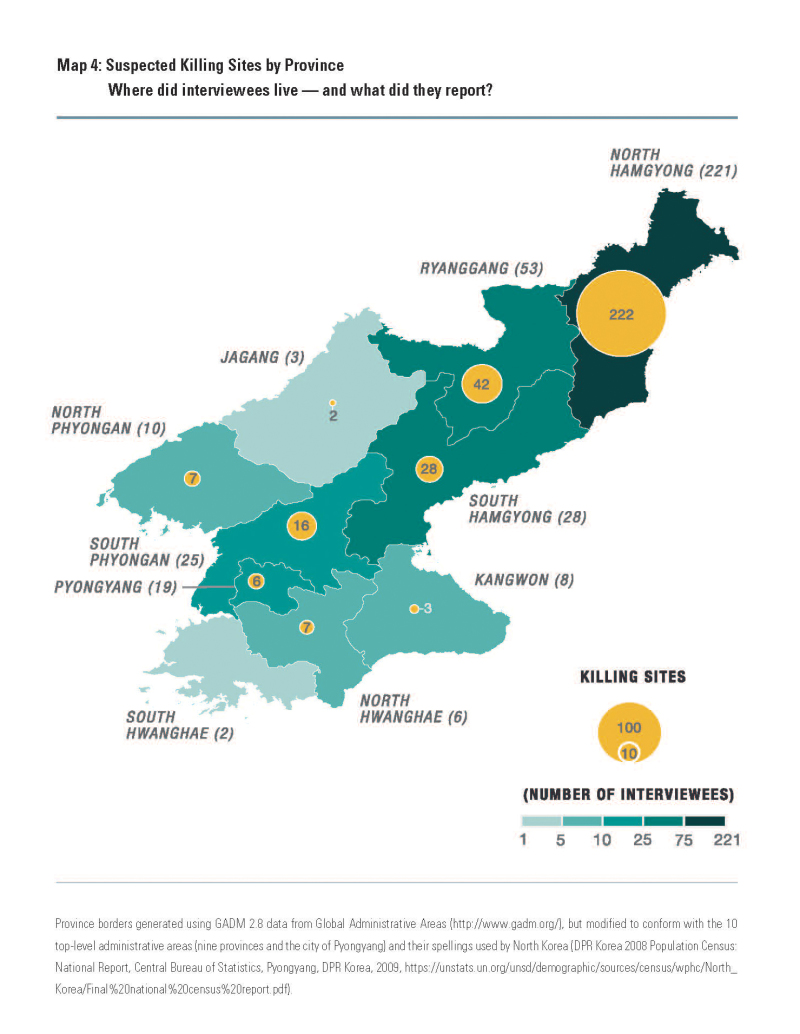
While for many years, human rights advocates and defectors from North Korea have decried a lack of concrete data on the abuses perpetrated by the regime, a recent report published on July 19 presented some findings that the group hopes will help further efforts to keep the North Korean government accountable.
For instance, the report "” published by a Seoul-based NGO of human rights advocates from five countries called Transitional Justice Working Group (TJWG) "” found from interviews with 375 defectors that there are more than 300 suspected killing sites in North Korea.
The most number of interviewees, as well as the highest number of suspected killing sites, came from North Hamgyong, from which 221 of the interviewees came, and where 222 killing sites are suspected to be located.

The Transitional Justice Working Group (TJWG) mapped the suspected killing sites by region, and also marked the regions in which the interviewees resided.
North Hamgyong is also the region in which the most number of "body sites' are suspected to be located "” where the bodies of those killed were either buried, or "abandoned, dumped, hidden without burial, or were storage sites for bodies yet to be buried or cremated." Twenty-four body sites were reported to be located in this region.
The research also identified some patterns across the killing and body sites.
"Our initial research indicates that burial sites are often located in mountainous areas, away from residential areas, but may also be found in parts of common cemeteries and around prisons," said the study. "Killing sites tend to be found in river beds, market places, near bridges, facilities for detention and imprisonment, and sports fields."
The advocacy group identified the possible locations by presenting Google Earth satellite images to the interviewees, and asking them to pinpoint the locations they recall. The report itself does not include specific locations as a precaution from the North Korean government destroying possible evidence.
"Sites of mass killings and mass burials tend to leave traces and "¦ evidence that is scientific and tangible," Lee Younghwan of the Transitional Justice Working Group, told Reuters. "Through this report, I hope people who are committing atrocities realize that all of their actions are being monitored and recorded in detail and that someday they will face consequences for their misdemeanor."
The report also recognized the limitations of its findings, including the fact that some of the locations may be repetitions among several interviewees. But the research is an important step forward in aiding future research and investigation, the report said.
"Although it is beyond our current capabilities to investigate and analyse the sites due to lack of access, this research is a crucial first step in the pursuit of accountability for human rights crimes," stated the report.
"It is also designed to serve first responders who may enter North Korea in the future. Part of our work involves looking into rapidly advancing remote sensing (RS) technologies, designed to detect and enhance analysis of sites containing human remains, for future application in North Korea."
















